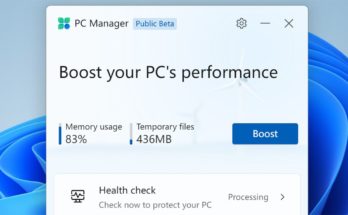
Alguns laptops vêm com teclas de função “Wi-Fi” ou interruptores que podem ativar ou desativar rapidamente o seu Wi-Fi. Se o seu PC não tiver um desses, no entanto, você pode fazer um com as ferramentas integradas ao Windows.
Você precisará começar criando um atalho na área de trabalho ou no menu Iniciar. Depois de fazer isso, você pode invocá-lo com um atalho de teclado, se desejar.
Índice
Etapa um: encontre o nome de sua conexão Wi-Fi
Primeiro, você precisa verificar o nome da sua conexão Wi-Fi. Você precisará disso para escrever os comandos que ativam e desativam a conexão Wi-Fi.
Vá para Painel de controle> Rede e Internet> Centro de rede e compartilhamento> Alterar configurações do adaptador.
Anote o nome da conexão Wi-Fi que você deseja desativar. Na imagem abaixo, o nome da conexão é “Wi-Fi”.

Etapa dois: criar os atalhos da área de trabalho
Agora que você sabe o nome da conexão, pode criar os atalhos da área de trabalho de que precisa. Clique com o botão direito na área de trabalho do Windows e selecione Novo> Atalho para criar um atalho.

Copie e cole a seguinte linha na caixa “Digite a localização do item”:
netsh interface set interface name = "Wi-Fi" admin = desativado
Substitua Wi-Fino comando pelo nome de sua conexão Wi-Fi.

Nomeie o atalho “Desativar Wi-Fi” ou algo semelhante e clique em “Concluir”.

Agora, vamos criar um atalho Habilitar Wi-FI. Clique com o botão direito na área de trabalho e selecione Novo> Atalho para criar um novo atalho.
Copie e cole o seguinte comando na caixa “Digite a localização do item”, substituindo Wi-Fipelo nome da sua conexão Wi-Fi.
netsh interface set interface name = "Wi-Fi" admin = habilitado

Nomeie o atalho “Habilitar Wi-Fi” ou algo semelhante e clique em “Concluir”.

Etapa três: faça com que os atalhos da área de trabalho sejam executados como administrador
O comando netsh que estamos usando precisa de acesso de administrador para fazer essa alteração em seu sistema. Precisamos fazer esses atalhos rodarem como Administrador.
Para fazer isso, clique com o botão direito em um dos atalhos e selecione “Propriedades”.

Clique no botão “Avançado” na guia Atalho, ative a opção “Executar como Administrador” e clique em “OK” duas vezes.
Repita esse processo para o segundo atalho para fazer com que os dois atalhos sejam executados como Administrador.

Etapa quatro (opcional): atribuir atalhos de teclado
Agora você pode atribuir um atalho de teclado , se desejar. Clique com o botão direito em um dos atalhos e selecione “Propriedades”.
Na guia Atalho, clique na caixa “Tecla de atalho” e pressione a tecla ou combinação de teclas que deseja atribuir ao atalho. Clique em “OK” depois.
Por exemplo, se você deseja atribuir o atalho de teclado Ctrl + Alt + F1, clique na caixa “Tecla de atalho” e pressione Ctrl + Alt + F1.

Repita esse processo para o segundo atalho, atribuindo o atalho de teclado que você deseja. Por exemplo, você pode atribuir Ctrl + Alt + F1 para desativar o Wi-Fi e Ctrl + Alt + F2 para ativar o Wi-Fi.

Note that these keyboard shortcuts will only work if the application shortcuts are stored on your desktop or in your Start menu. If you place them in any other folder, the shortcuts you assign won’t do anything when you press them on your keyboard.
You can add the shortcuts to your Start menu, if you like, by copy-pasting the following line into File Explorer’s location bar:
%appdata%\Microsoft\Windows\Start Menu\Programs
Copy-paste the shortcuts into the folder that appears. They’ll appear in your Start menu, where you can click them, and the keyboard shortcuts will also function. You can remove them from your desktop, if you like.

How to Use the Shortcuts
You can now disable or enable your Wi-Fi by either double-clicking the shortcuts on your desktop, or by pressing whichever shortcut keys you assigned to the shortcut.
The one “catch” with this method is that you’ll see a User Account Control popup every time you run the shortcut, asking whether you want to perform the action. You just have to click “Yes” and your change will take effect immediately. While there are ways to run commands as administrator without prompting you, there are potential security concerns with these methods, so we don’t recommend them.

Other Ways to Quickly Disable Your Wi-Fi
RELATED: What Does Airplane Mode Do, and Is It Really Necessary?
There are other ways to quickly enable and disable your Wi-Fi, too. On Windows 10, you can use Airplane Mode, which will disable Wi-Fi, Bluetooth, and any other wireless radios. Just click the notification icon at the right side of your taskbar, to the right of the clock, and click the “Airplane Mode” tile at the bottom of the action center. Click this tile again to disable Airplane Mode and re-enable Wi-Fi.

You can also head to Settings > Network & Internet > Airplane Mode and you’ll find a toggle for quickly enabling and disabling Wi-Fi.

Of course, striking a few keys on the keyboard is faster and more convenient than either of these. But it’s good to know they’re there.


